Read on for another in the series of posts by Archive Services looking at how Dundee has changed.
This 1962 photograph was taken looking up Airlie Place towards Airlie Terrace.
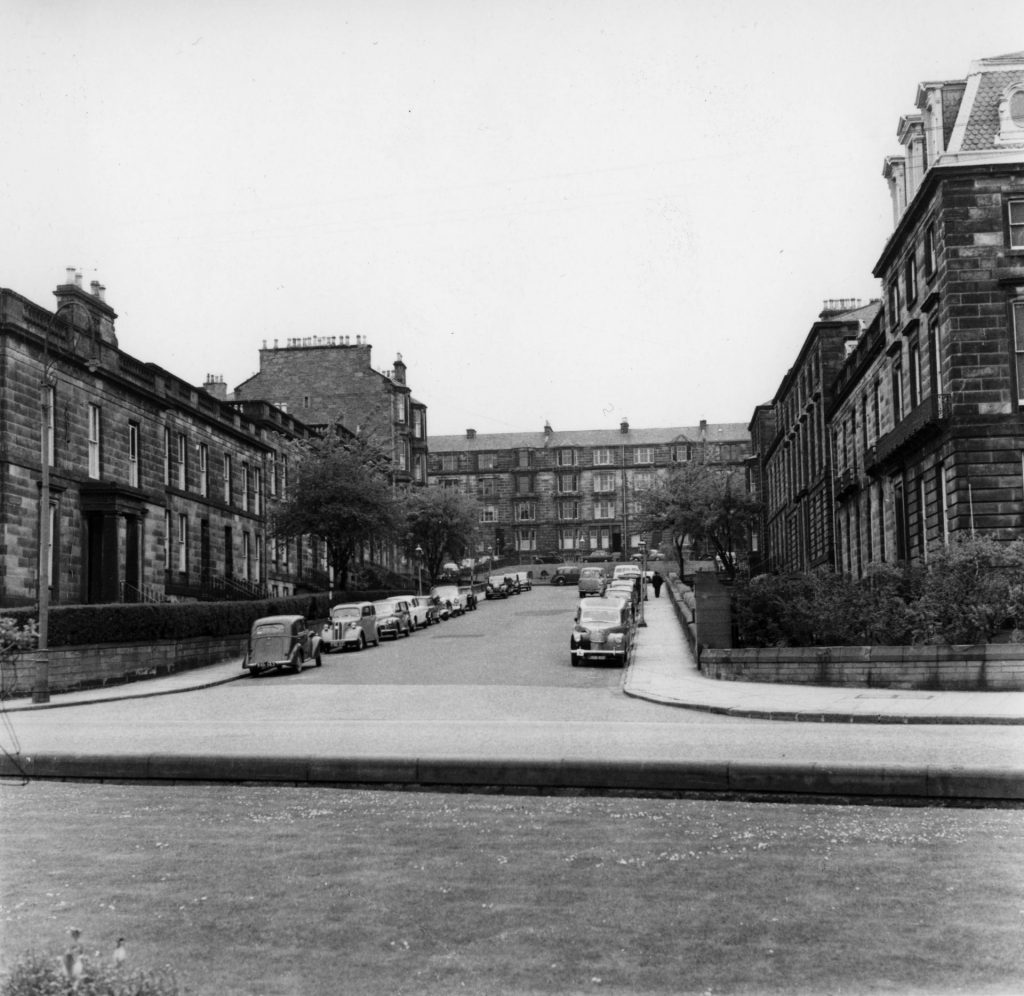
In some ways, surprisingly little has changed, as on the outside Airlie Place looks little different. Built in the mid 19th century to the south of Airlie Lodge, Airlie Place was originally a residential street, with its inhabitants including professionals and mill owners. Residents in the 1870s and 1880s included for instance, the textile manufacturers W. L. Boase and P. G. Walker, several ministers including the Reverend William Knight, Minister of St Enoch’s Church and the Reverend W. J. Cox of Panmure Street Congregational Church and the surgeon Matthew Nimmo. By then, the street had been expanded to the north with the addition of tenements which would continue into a rectangle at the top called Airlie Terrace as can be seen on the map. These were built on the site of the old Airlie Lodge. These tenements tended to be home to the middle classes, with inhabitants in the 1880s including teachers, clerks and printers. In the twentieth century, one of the residents at number 22 Airlie Place was the artist journalist and poet Joseph Lee.
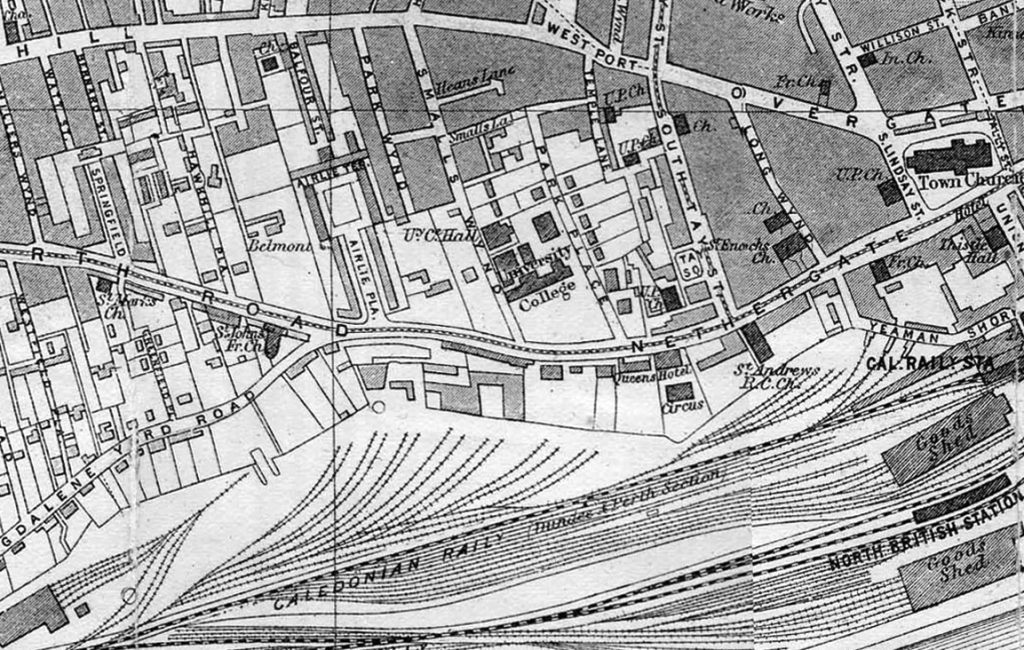
The creation, and subsequent expansion of University College, Dundee, had a major impact on Airlie Place. By the 1910s, a number of houses in the lower part of Airlie Place were owned by medics, including some who taught at the nearby Medical School such as David MacEwan, Professor of Surgery, and J. A. C. Kynoch, Professor of Obstetrics.
1 Airlie Place became the first woman’s hall of residence in Dundee in 1917. Over the next few decades the College would gradually acquire more and more properties in Airlie Place and Airlie Terrace to form Airlie Hall which was for many years the main student residence.

By the time Queen’s College, Dundee was set up in 1954 Nos 3-13 Airlie Place were taken up by Airlie Hall, with No 1 serving as the warden’s accommodation and No 15 being used by the Principal of the University of St Andrews. Across the street nos 2, 4 and 8 were used as an annex to Airlie Hall, while the College’s health service was based in 5 Airlie Terrace.
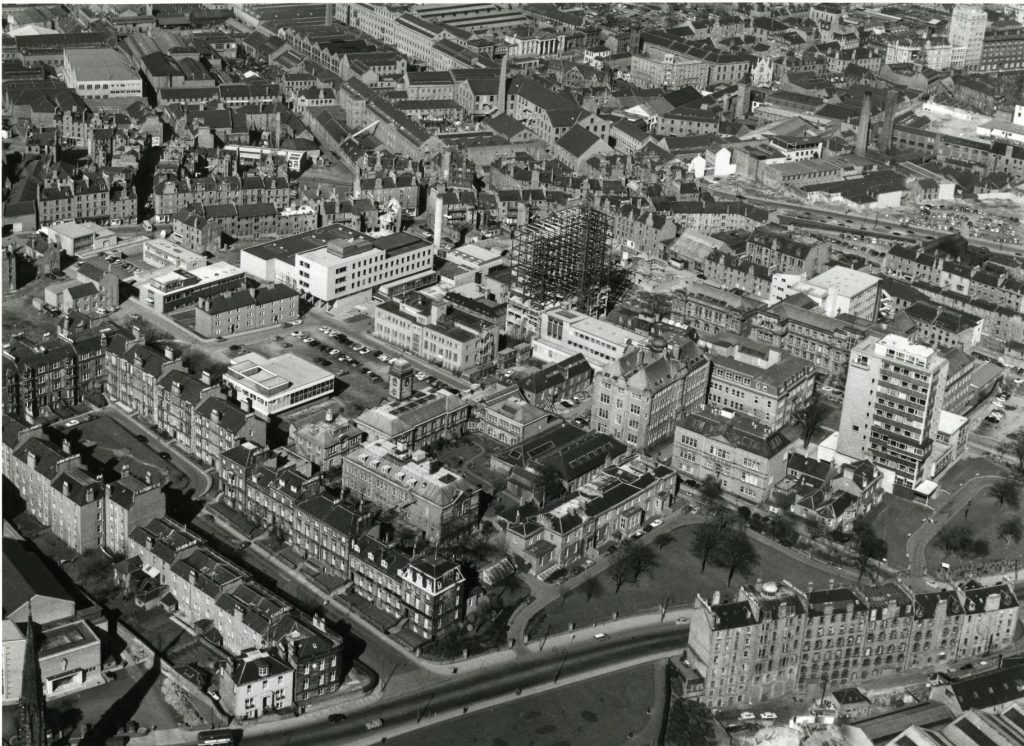
Eventually all of Airlie Place would be taken over by the University of Dundee. Current occupants of the site include the Registry, the School of Health Sciences and the International College Dundee.
Ultimately University expansion doomed Airlie Terrace as it was knocked down to make way for a new Students’ Assocation Building. This project, which was the subject of several delays, took a long time to come to fruition, with construction finally starting in 1971 and the new building being occupied in 1974.
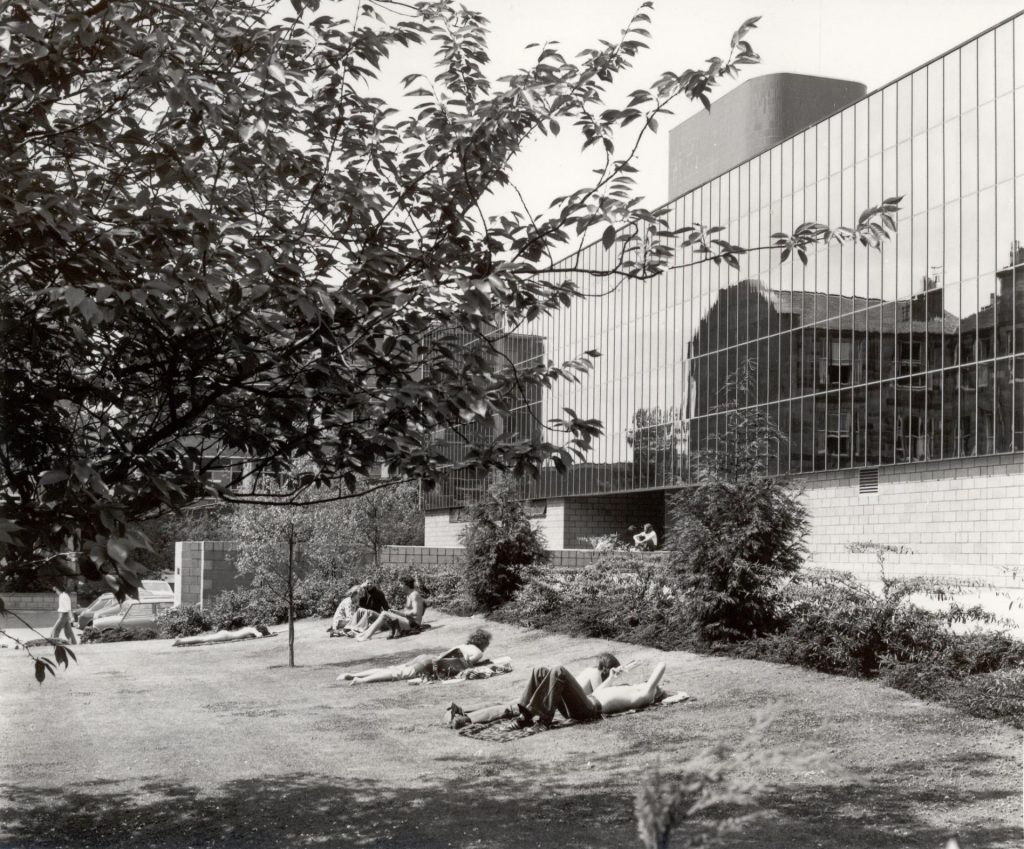
As the 2017 photograph shows, the building at the top of the street now dominates the view up Airlie Place.
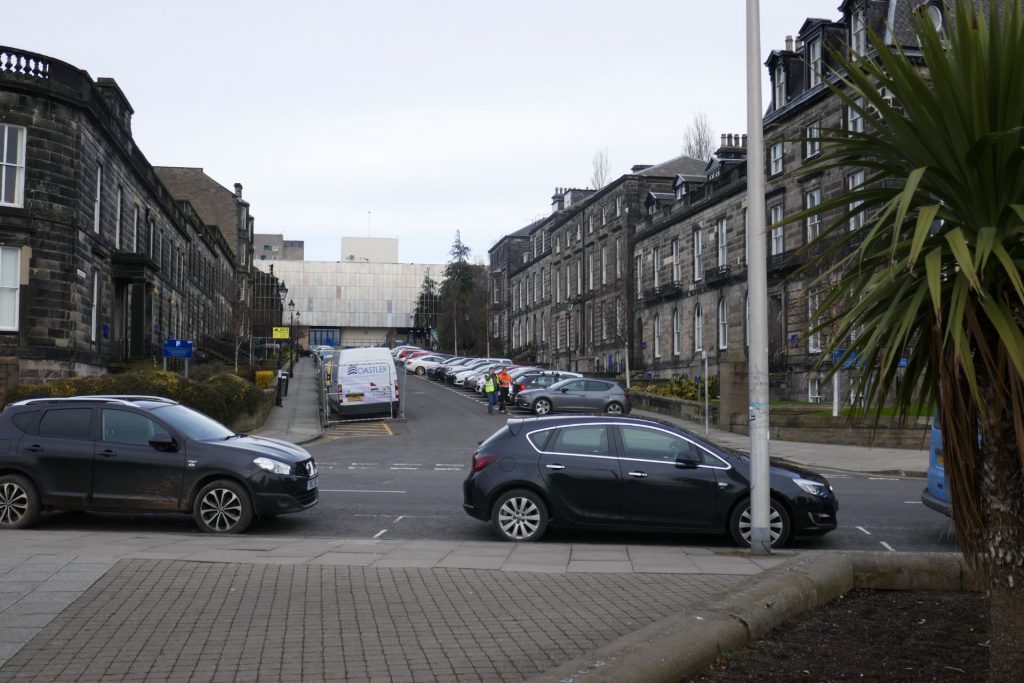
To read more posts about changing Dundee and the University use the search function in the blog – search for changing Dundee.
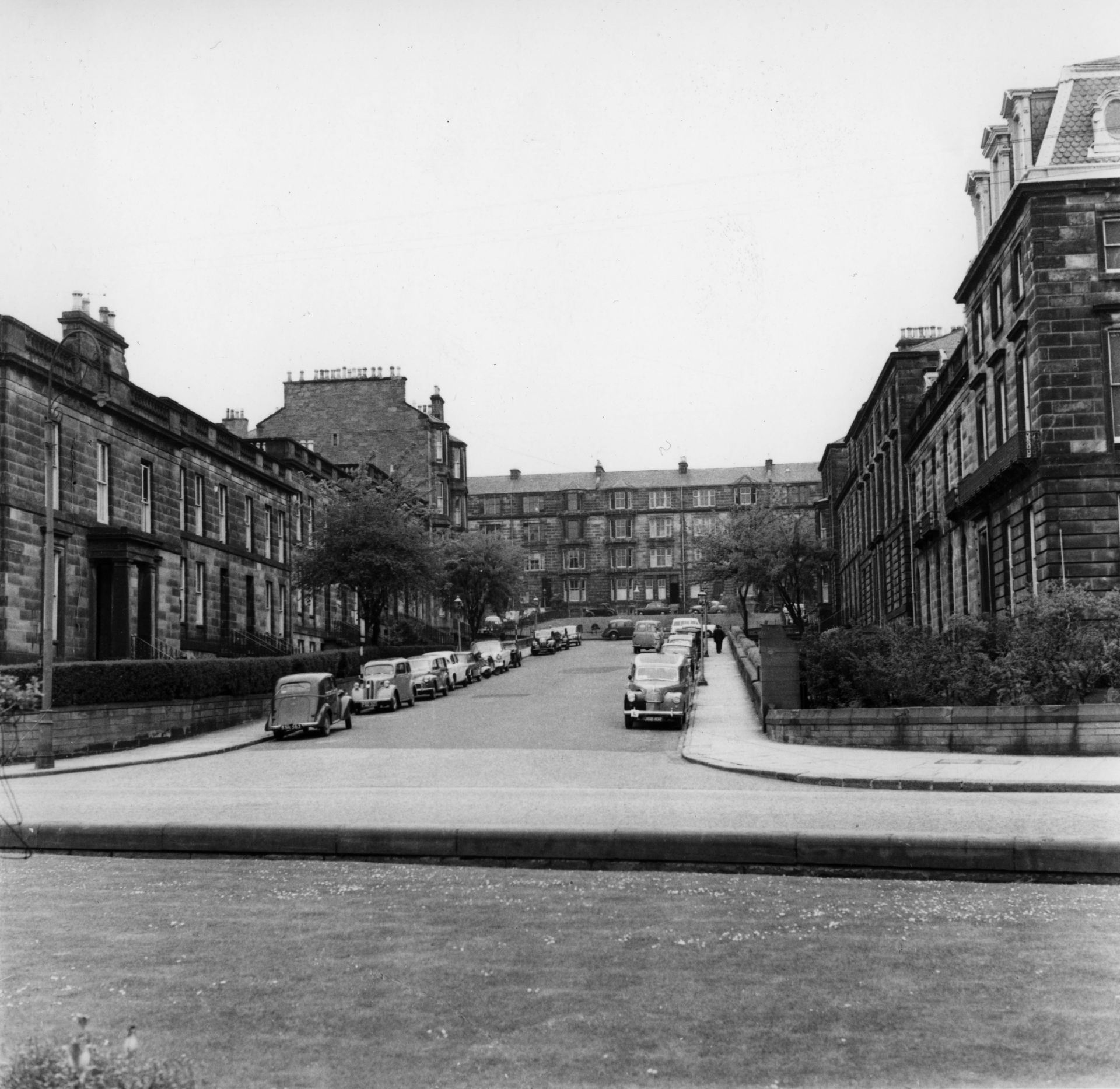
I was an exchange student in the Summer of 1966 and resided at Airlie Place. I am taking a tour of Scotland soon and will be in Dundee to try to see where I resided and tour the University. Would it be possible to see the housing? I will be in Dundee the 7 th and 8 th of August. Thank you for your consideration. Jan Jones Sarpa, Ed.D., Aspen, Colorado, USA jansarpa@comcast.net
Thank you for your message. I will pass it onto alumni who should be able to help you.
I am visiting Airlie Place in a couple of weeks to look for number 19 where my Aunt lived in the 1950s. She died before I was born. Is Number 19 still there?
Unfortunately it was demolished to make way for the students union. It would have been on the top right, I will see if we have an old photograph and email it to you.
Can you tell me the name of the bowling green that used to be there thank you
Hello Jim. Thank you for your message and sorry for taking so long to get back to you. We have been puzzling about your request and wondering where there might have been space for a bowling green as we didn’t know one existed at Airlie Place. In October 1919 it was announced that there was a plan to set up a Masonic Bowling Green in Dundee in memory of “brethren” killed in the War and a site at Airlie Place was considered favourable – but I can find no evidence that it actually ever happened. Do you know otherwise?
Best wishes Caroline
hi,
I am a collector of postal history and have a postcard posted to , looks like, Dr or Mr Harley of 17 Airlie Place, from Durban, South Africa. Posted 1912.
If you have a collection of all things, Airlie Place, I would be happy to donate it to you.
It is with me in Switzerland
Hello Thank you for contacting us. We would be very happy to accept the postcard. Thank you for thinking of us. Caroline Brown, University Archivist.